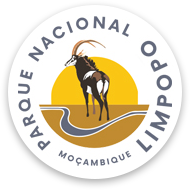A novel experiment to protect endangered wild dogs is using the scent marks of unrelated wild dogs and hundreds of their scats to keep them within the safety of their new home in a Botswana nature reserve.
Last week, the 18 wild dogs – nine adults and nine puppies – from the Marakele national park in SA were released into the Northern Tuli Game Reserve in Botswana.
Their translocation aims to aid the creation of a viable population of wild dogs in the Limpopo valley region of eastern Botswana, according to conservationists.
This experimental trial of the “bio-fence” concept is using wild dog scent marks from unrelated packs to create a socially defined boundary at the borders of the reserve. Wild dog territories are clearly marked, explained Harriet Davies Mostert, the manager of the Endangered Wildlife Trust’s carnivore conservation group.
“We’ve collected over 300 scats from other packs in the area and created artificial boundaries by putting up scats and the scent marks.
“The idea is if they are moving into that direction and come to the artificial boundary, they’ll think: ëOh gosh, we have neighbours to our east already, it’s already occupied by wild dogs. Let’s not go there, let’s go somewhere else.”
The trial is being carried out in conjunction with the University of Pretoria and the Botswana Predator Conservation Programme.
Their work is already paying off. “In the past few days, the wild dogs have done a bit of exploration. They’ve already got to the bio-fence and turned around. That’s what we were hoping,” said Mostert.
Conservationists have fitted five of the adults with satellite collars to keep track of their movements and this could help prevent conflict with locals living in the surrounding Bobirwa district.
Once abundant in sub-Saharan Africa, habitat destruction, loss of prey and hunting have decimated historic wild dogs populations.
The northern reaches of Botswana are one of the last remaining strongholds with between 700 and 800 wild dogs remaining there.
“In SA, our only viable population is in the Kruger,” said Mostert.
In 2006, SA, Botswana and Zimbabwe signed a memorandum of understanding to create the Limpopo-Shashe Transfrontier Conservation Area, which incorporates the Northern Tuli game reserve, the Tuli Circle in Zimbabwe and the Mapungubwe national park in SA.
Sheree Bega, Pretoria News

